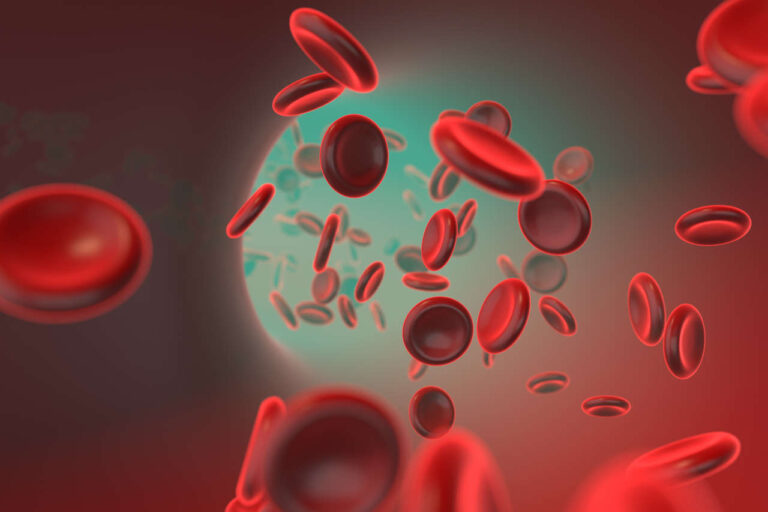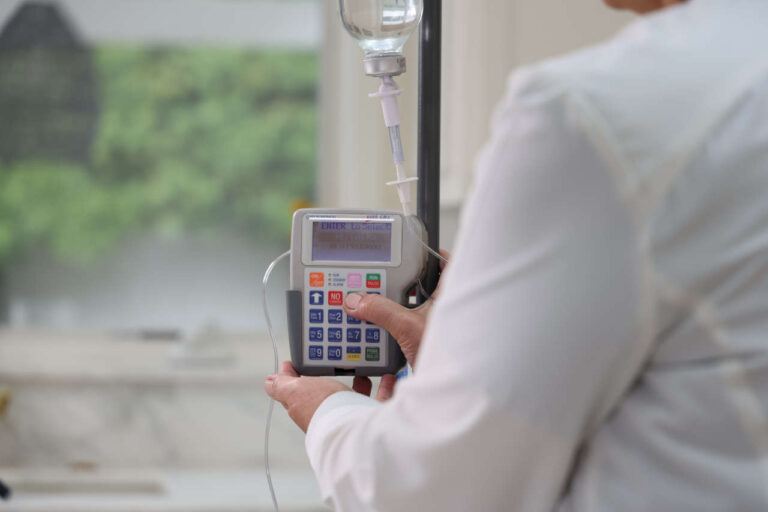
A growing number of medical literature suggests the use of IVIG for polymyositis. IVIG may be particularly beneficial in chronic, treatment-resistant cases.
Get IVIG Prior Authorization
Corticosteroids and immunosuppressants are the first-line treatment for polymyositis (PM). However, they may cause severe side effects. Moreover, many patients fail to improve with these treatments.
Therefore, your doctor may consider intravenous immunoglobulin (IVIG).
According to the EFNS guidelines for the use of intravenous immunoglobulin in the treatment of neurological diseases, “IVIG may be considered one of the treatment options for polymyositis when first-line immunosuppressive treatment fails.” [1]
Similarly, the National Blood Authority Australia recommends IVIG to treat significant muscle weakness or difficulty swallowing in [2]:
- Adults with biopsy-proven PM unresponsive to corticosteroids and immunosuppressants.
- Children with definite PM unresponsive to corticosteroids and immunosuppressants.
IVIG for Polymyositis: Navigating the Benefits From the Past to the Present
Early reports on the use of IVIG for polymyositis appeared in 1987 [3].
In the case report published in the “Journal of American Medical Association (JAMA),” investigators observed significant improvements in muscle strength and lung function in a 15-year-old girl. The girl previously received corticosteroids and immunosuppressants without substantial benefits.
Since then, many studies have confirmed the benefits of IVIG for polymyositis resistant to conventional therapies.
For instance, a 2008 case report found that IVIG (0.04 kg/day for 5 days) resulted in improved muscle strength [4]. The participant was resistant to previous treatment with methylprednisolone and cyclophosphamide.
According to an extensive review published in 2023, IVIG appears to be a safe and effective treatment for PM that helps [5]:
- Improve muscle strength
- Reduce CK (creatinine kinase) levels
- Improve swallowing difficulty
Likewise, authors of a 2023 review conclude that IVIG may be used as a first-line, steroid-sparing drug or as an add-on to conventional therapies. They also stress the need to customize IVIG therapy relevant to specific cases [6].
IVIG for Polymyositis: Mechanism of Action
The exact mechanism of action is not fully understood.
In polymyositis, white blood cells enter into and destroy the muscle fibers. IVIG suppresses these cells and helps improve your symptoms.
Researchers believe IVIG may also work in other ways, such as by [7]:
- Boosting your immune system
- Keeping your body from making large amounts of autoantibodies (proteins that destroy muscle fibers)
- Blocking the action of pro-inflammatory molecules
- Neutralizing molecules that trigger inflammation
IVIG for Polymyositis: How Effective Is It?
Nearly 70% of participants in a 2002 clinical trial experienced improved symptoms. The improvements were sustained in about 50% of the participants in a 3-year follow-up period after stopping IVIG therapy [8].
Case reports also support the use of IVIG for polymyositis-associated lung scarring [9].
The response may vary depending on:
- Individual patient factors
- Stage of the disease
- Type of IVIG product used
- Presence/absence of associated medical conditions
Get IVIG Copay Assistance – Speak to a Specialist
IVIG for Polymyositis: Understanding the Potential Barriers
Though IVIG is an effective treatment for polymyositis, accessibility to IVIG products and cost remain significant barriers.
What Is the Latest Treatment for Polymyositis?
Many health experts consider IVIG alone or with immunosuppressants a more effective option for treatment-refractory polymyositis.
What Are Some Associated Conditions?
Polymyositis can be associated with other conditions, such as myocarditis (inflammation of the heart’s muscular walls) or lung scarring. Moreover, polymyositis may increase the risk of cancer.
What Blood Test Shows Polymyositis?
Your doctor will likely order specific blood tests if your symptoms suggest polymyositis. One of these blood tests measures the levels of an enzyme called creatinine kinase (CK). CK levels are usually high in people with polymyositis.
REFERENCES:
- Elovaara, I et al. “EFNS guidelines for the use of intravenous immunoglobulin in treatment of neurological diseases: EFNS task force on the use of intravenous immunoglobulin in treatment of neurological diseases.” European journal of neurology vol. 15,9 (2008): 893-908. doi:10.1111/j.1468-1331.2008.02246.x
- National Blood Authority. Inflammatory myopathies: polymyositis (PM), dermatomyositis (DM) and necrotising autoimmune myopathy (NAM) Conditions for which IVIg has an established therapeutic role. https://blood.gov.au/system/files/Inflammatory-myopathies-PM-DM-and-NAM-CV3.pdf
- Roifman, C M et al. “Reversal of chronic polymyositis following intravenous immune serum globulin therapy.” JAMA vol. 258,4 (1987): 513-5. doi:10.1001/jama.1987.03400040111034
- Kristofova, B et al. “Successful therapy with intravenous immunoglobulin in the management of polymyositis.” Bratislavske lekarske listy vol. 109,9 (2008): 412-3.
- Xiong, Anji et al. “The therapeutic efficacy and safety of intravenous immunoglobulin in dermatomyositis and polymyositis: A systematic review and meta-analysis.” Modern rheumatology vol. 33,3 (2023): 533-542. doi:10.1093/mr/roac057
- Gandiga, Prateek C et al. “Intravenous Immunoglobulin in Idiopathic Inflammatory Myopathies: a Practical Guide for Clinical Use.” Current rheumatology reports vol. 25,8 (2023): 152-168. doi:10.1007/s11926-023-01105-w
- Patwardhan, Anjali. “The Value of Intravenous Immunoglobulin Therapy in Idiopathic Inflammatory Myositis in the Current Transformed Era of Biologics.” Cureus vol. 12,2 e7049. 19 Feb. 2020, doi:10.7759/cureus.7049
- Cherin, Patrick et al. “Results and long-term followup of intravenous immunoglobulin infusions in chronic, refractory polymyositis: an open study with thirty-five adult patients.” Arthritis and rheumatism vol. 46,2 (2002): 467-74. doi:10.1002/art.10053
- Soran Peshbahar & Elisabeth Bendstrup (2020) Remarkable benefits of intravenous immunoglobulin (IVIG) in a patient with polymyositis-associated acute interstitial lung disease, European Clinical Respiratory Journal, 7:1, 1840706, DOI: 10.1080/20018525.2020.1840706













